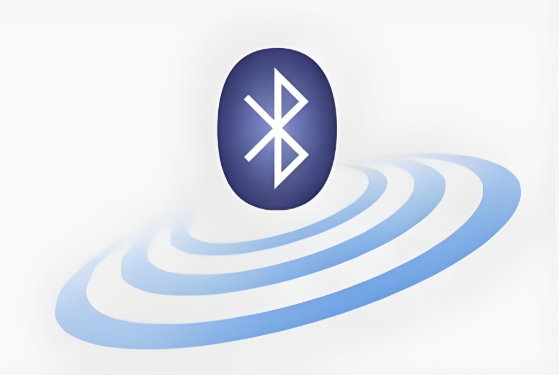Bluetooth technology, a short-range wireless communication standard born in 1994, has become the "invisible link" connecting smartphones, headphones, and smart home devices. Its core is to achieve data transmission between devices without complicated wiring through radio waves in the 2.4GHz frequency band. From the initial audio transmission to today's IoT ecosystem, the working principle of Bluetooth has been constantly evolving, with frequency hopping spread spectrum technology, master-slave device architecture and low-power design as the core, supporting a wireless communication network covering billions of devices.

Frequency band and frequency hopping technology: the core strategy to combat interference
Bluetooth operates in the unlicensed 2.4GHz ISM band, which is very prone to interference because it is shared by devices such as Wi-Fi and microwave ovens. To solve this problem, Bluetooth uses frequency hopping spread spectrum technology (FHSS):
Frequency switching: The device switches channels every 1.6 milliseconds (1600 hops/second), dividing the 2.4GHz band into 79 1MHz-wide channels (classic Bluetooth) or 40 2MHz-wide channels (Bluetooth 4.0+).
Adaptive Frequency Hopping (AFH): Dynamically detect and avoid interfered channels, give priority to using idle frequency bands, and ensure communication stability. For example, in an office environment with dense Wi-Fi, Bluetooth can still maintain connection through AFH.
Master-Slave Device Architecture: The Cornerstone of Communication Order
The Bluetooth network adopts the master-slave mode, supporting up to 1 master device to connect to 7 slave devices to form a "piconet":
Master device responsibilities: initiate connection requests, manage communication timing, and coordinate slave device data transmission. For example, a mobile phone can be connected to a Bluetooth headset, a smart watch, and a car system as a master device at the same time.
Slave device response: passively wait for the master device command and send data only after obtaining authorization. For example, a Bluetooth keyboard only transmits a signal to the computer when the user presses a key.
Role switching: Some devices (such as laptops) support master-slave mode, and can flexibly switch roles to adapt to different scenarios.
Device pairing and security mechanism: from stranger to trusted connection
The first communication of Bluetooth devices needs to complete the pairing process and establish an encrypted channel:
Inquiry and paging: The master device scans the surrounding Bluetooth signals and sends a connection request to the target slave device.
Key exchange: Generate a shared key through a PIN code or the Secure Simple Pairing (SSP) protocol to encrypt subsequent communications. For example, when a Bluetooth speaker is paired with a mobile phone, the user needs to confirm or enter the pairing code.
Trust chain establishment: After successful pairing, the device information is stored in each other's "trust list", and subsequent connections do not require repeated verification.
Data transmission and protocol stack: collaboration from the physical layer to the application layer
Bluetooth communication relies on a layered protocol stack to ensure efficient and reliable data transmission:
Physical layer (PHY): uses GFSK modulation technology to transmit data packets at a rate of 1Mbps. Bluetooth 5.0 introduces a 2Mbps mode, doubling the rate.
Link layer (LL): manages device status (standby, connection, sleep), synchronizes clocks, and handles data packet retransmission and error correction.
Logical Link Control and Adaptation Protocol (L2CAP): Segment and reassemble high-level data and support multiplexing. For example, audio and control commands are transmitted simultaneously.
Application layer protocols: such as A2DP (audio transmission), HID (human-machine interface), and GATT (generic attribute profile), which define the data format of specific application scenarios.
Low-power design: the key to extending device battery life
The low-power Bluetooth (BLE) technology introduced by Bluetooth 4.0 achieves ultra-long battery life through the following strategies:
Fast connection: compress the connection process to 3 milliseconds and reduce the activation time of the RF module.
Deep sleep: The device is in sleep mode most of the time and wakes up only briefly when communication is required. For example, a smart bracelet synchronizes data with a mobile phone via BLE, and the battery life can reach several months.
Broadcast mode: supports one-way data transmission in a non-connected state, suitable for scenarios such as beacons.
Bluetooth technology has built a huge ecosystem covering consumer electronics, medical, and industrial Internet of Things through frequency hopping anti-interference, master-slave architecture, secure pairing, and low-power design. From classic Bluetooth to Bluetooth 5.3, its transmission rate has been increased to 3Mbps, positioning accuracy has reached centimeter level, and innovative functions such as "channel detection" have been introduced. For example, our Blue Source Positioning System can connect to all Bluetooth terminals that use the Bluetooth 4.0-5.1 protocol. One line of code can enable any smart terminal that uses the Bluetooth protocol, such as mobile phones, wristbands, watches, headphones, speakers, anti-lost devices, cars, etc.